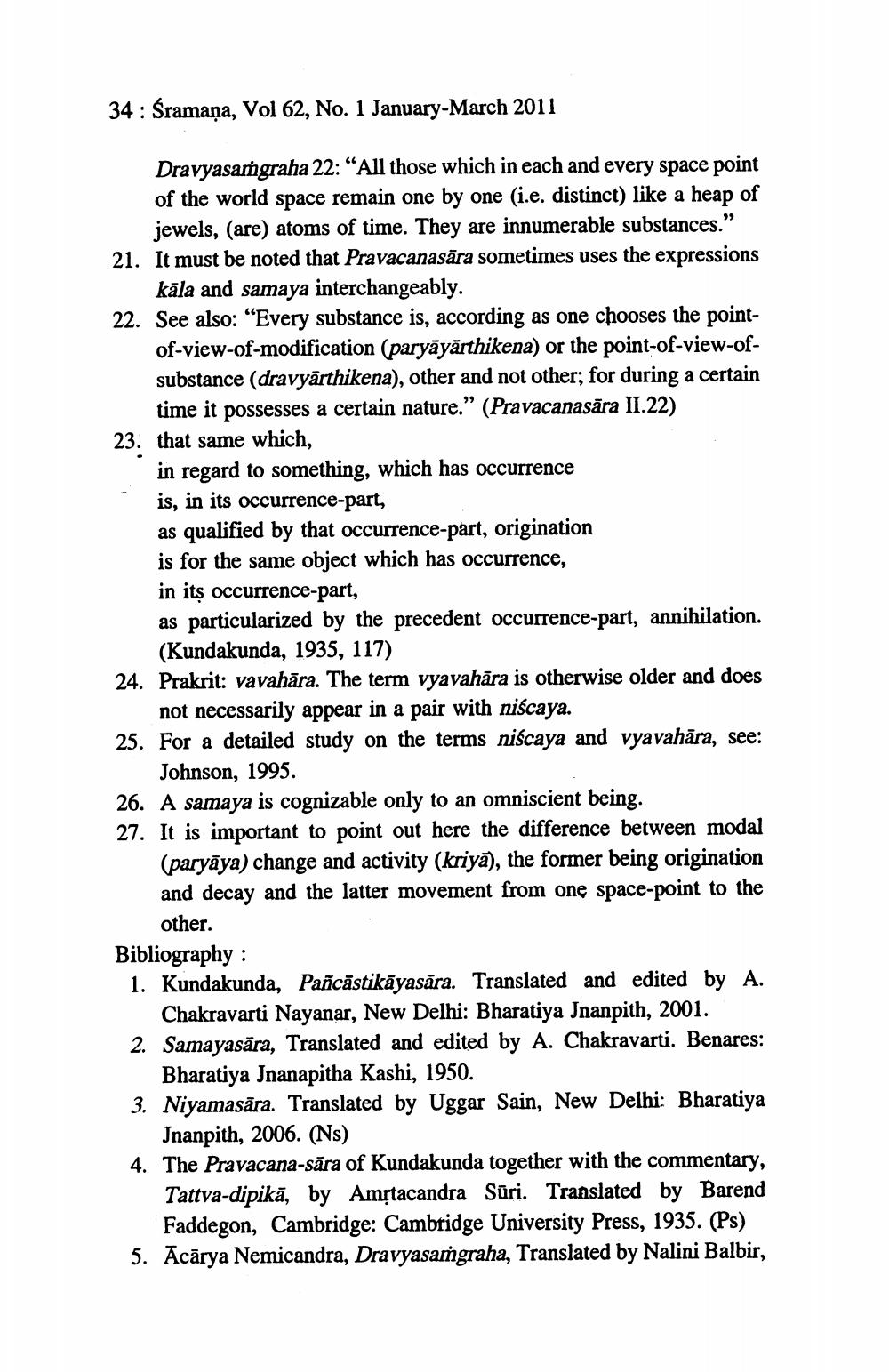________________
34: Śramana, Vol 62, No. 1 January-March 2011
Dravyasamgraha 22: "All those which in each and every space point of the world space remain one by one (i.e. distinct) like a heap of jewels, (are) atoms of time. They are innumerable substances.' 21. It must be noted that Pravacanasara sometimes uses the expressions
99
kāla and samaya interchangeably.
22. See also: "Every substance is, according as one chooses the pointof-view-of-modification (paryayarthikena) or the point-of-view-ofsubstance (dravyarthikena), other and not other; for during a certain time it possesses a certain nature." (Pravacanasara II.22) 23. that same which,
in regard to something, which has occurrence
is, in its occurrence-part,
as qualified by that occurrence-part, origination
is for the same object which has occurrence,
in its occurrence-part,
as particularized by the precedent occurrence-part, annihilation. (Kundakunda, 1935, 117)
24. Prakrit: vavahāra. The term vyavahāra is otherwise older and does not necessarily appear in a pair with niscaya.
25. For a detailed study on the terms niscaya and vyavahāra, see: Johnson, 1995.
26. A samaya is cognizable only to an omniscient being.
27. It is important to point out here the difference between modal (paryaya) change and activity (kriya), the former being origination and decay and the latter movement from one space-point to the other.
Bibliography:
1. Kundakunda, Pañcāstikāyasara. Translated and edited by A. Chakravarti Nayanar, New Delhi: Bharatiya Jnanpith, 2001.
2. Samayasara, Translated and edited by A. Chakravarti. Benares: Bharatiya Jnanapitha Kashi, 1950.
3. Niyamasara. Translated by Uggar Sain, New Delhi: Bharatiya Jnanpith, 2006. (Ns)
4. The Pravacana-sara of Kundakunda together with the commentary, Tattva-dipika, by Amṛtacandra Sūri. Translated by Barend Faddegon, Cambridge: Cambridge University Press, 1935. (Ps) 5. Acārya Nemicandra, Dravyasamgraha, Translated by Nalini Balbir,




